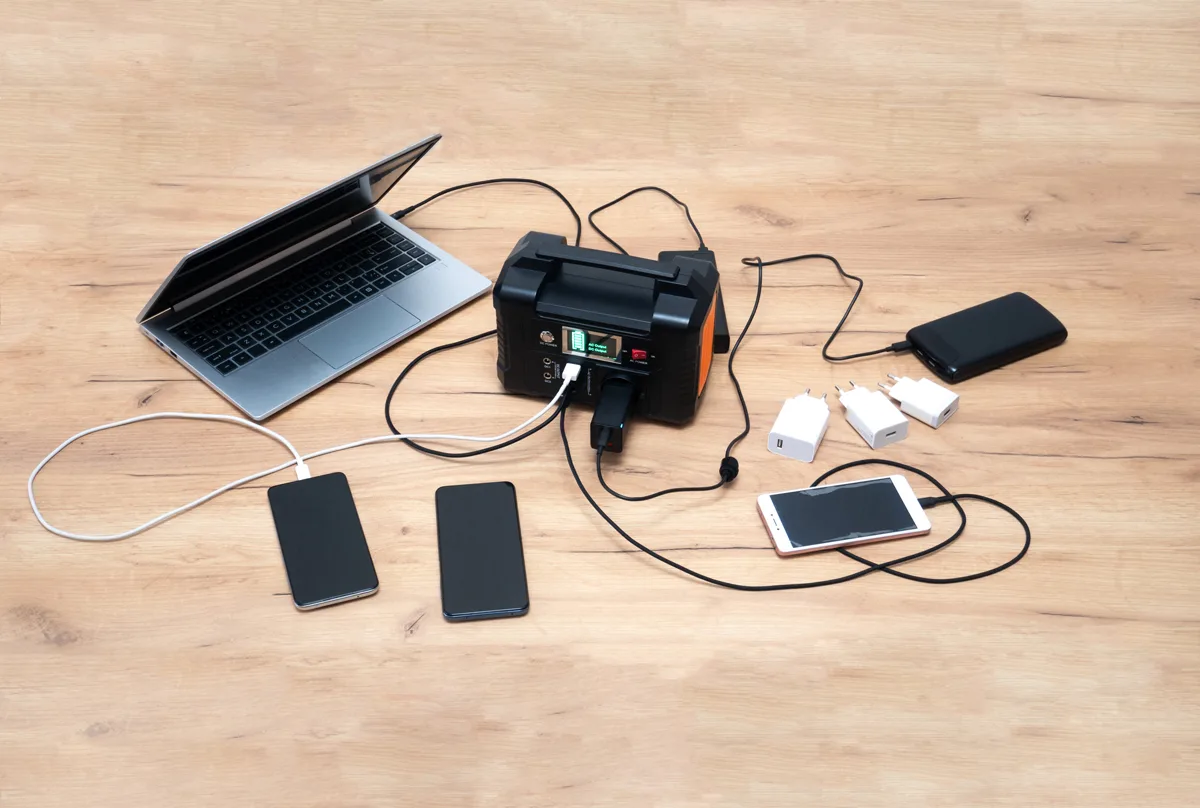4 minute read
Emergencies and disasters can happen anytime, anywhere. Being prepared allows you to respond quickly and help protect your home and family when an emergency strikes. A key part of emergency preparedness is having backup power solutions, like a portable power station, so you can maintain access to electricity if the power goes out. This article explores steps you can take to safeguard your home and how power solutions factor into emergency preparedness plans.
1. Have An Emergency Preparedness Kit
Having an emergency preparedness kit is essential to be ready for disasters and power outages. The kit should contain necessary supplies like non-perishable food, water, a first aid kit, flashlights, batteries, a radio, sanitation items, copies of important documents, and more. Make sure to check expiration dates and replenish the kit regularly. Also, consider having backup options like a portable power station to provide electricity. A portable power station can power lights, charge devices, run small appliances and more.
2. Know How To Shut Off Utilities
In an emergency, you may need to shut off utilities like gas, water, and electricity. Locate the shut-off valves and switches and make sure all family members know how to use them. Create labels if needed. If you suspect a gas leak, leave immediately and call the gas company from outside. Practice shutting off utilities so you’re prepared. Consider turning off utilities when evacuating, but don’t attempt to turn off natural gas if you smell or hear leaking.
3. Strengthen Your Property
Consider steps to strengthen your property against damage. Inspect the roof and siding, trim overhanging branches, clean gutters, and downspouts, and repair weaknesses. Secure loose objects outdoors. If in a flood-prone area, elevate or relocate electrical components and mechanical equipment. Use flood barriers and drainage solutions. Take measures to prevent frozen pipes, like insulating walls and ensuring adequate heat. Such preparations can help minimize property risks.
4. Have An Evacuation Plan
Evacuation is sometimes necessary during emergencies. Create an evacuation plan with primary and alternate routes, designated meeting places, and out-of-town contacts. If evacuating, bring essentials like your emergency kit, prescriptions, pet supplies, valuables, and chargers for phones and other devices. Also, take your portable generator or power station if you have one. Keep copies of the plan in your emergency kit, car, work, and other places. Ensure everyone understands the plan. Stay informed about evacuation orders and routes via alerts, officials, and local news.
5. Practice Emergency Communication
Communication can be difficult during emergencies, so plan ahead. Keep mobile phones and other devices fully charged. Have backup charging options like a portable power station, car charger, or hand crank charger. Sign up for community alert systems that can send notifications by call, text, or email. Pick an out-of-town contact family members can check in with if local communications are down. The contact can relay status updates. Keep their number handy in your emergency kit, wallet, and phone contacts.
6. Secure Important Documents
Secure copies of important documents in waterproof and fireproof containers. This includes identification, insurance policies, medical records, bank account info, wills, deeds, and other valuable documentation and information. Keep copies at your home and store them digitally or at another secure off-site location. This ensures you can still access necessary documents if your home is damaged or inaccessible. Lists of models and serial numbers of possessions can also help with insurance claims later.
7. Get To Know Your Neighbors
Connecting with neighbors builds community relationships that can be invaluable in emergencies. Exchange contact information and learn about any medical or accessibility needs. Check on neighbors during power outages and disasters. They may have useful insights about the area that can aid preparations. Pool resources in an emergency. Just knowing your neighbors goes a long way toward emergency preparedness.
8. Have Backup Lighting And Power Options
Loss of electricity impairs lighting, refrigeration, medical devices, and other necessities. Be prepared with backup options. Have flashlights, headlamps, and battery-powered lanterns readily available. Candles can also provide light but pose fire risks. Store extra batteries. Unused car batteries hooked up to lights or fans can supply backup power. A portable backup generator or power station lets you power essentials for hours or days. Test backups regularly so you know they will perform when needed.
Conclusion
Being prepared allows you to handle disasters and emergencies safely and effectively. Key steps include having an emergency kit, knowing how to shut off utilities, strengthening your property, making evacuation plans, practicing communication, securing documents, knowing your neighbors, and having backup power options like a portable power station. Adequate preparations empower you to secure your home, protect your family, and persevere through power outages and disasters. Though emergencies can happen unexpectedly, you can be ready to face them and safeguard what matters most.





